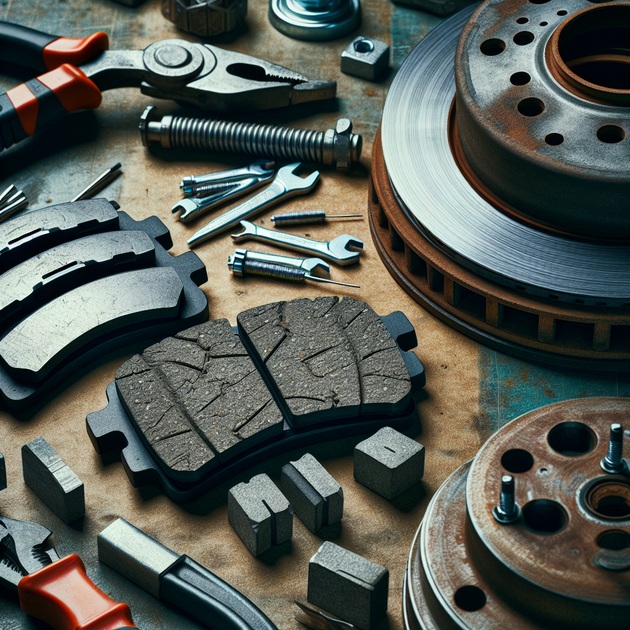Ever looked at your rear brake pads and noticed one side’s paper-thin while the other still looks fresh? Uneven wear on your rear brake pads isn’t just annoying—it can signal a deeper issue in your braking system. If you drive a 2011 Toyota Camry LE 4-cylinder (or really, any car), understanding what causes this problem can save you money and keep you safer on the road.
Let’s break down why rear brake pads might wear unevenly and what you can do if it happens to you.
Main Causes of Uneven Rear Brake Pad Wear
When rear brake pads wear unevenly, most drivers immediately think something must be wrong with the pads themselves. But the truth is, several underlying issues can cause this—some simple, some a bit sneakier.
- Sticking or Seized Calipers: If a caliper piston or slide pin gets stuck, one pad will drag against the rotor more than the other. You mentioned your caliper pins seem to slide freely, but sometimes they can stick under load or after a short drive.
- Worn or Misaligned Hardware: Shims and clips help keep pads aligned. If they’re bent or missing, or if lube isn’t applied correctly, it can cause uneven contact.
- Brake Hose or Fluid Issues: A collapsed brake hose or old brake fluid can make the caliper slow to release, keeping pressure on one pad. Flushing and bleeding your brake lines might be worth considering if nothing else seems off.
- Faulty Caliper Piston: Caliper pistons can get corroded or jammed—especially if the dust boots are cracked. This can cause one pad to wear faster than its twin.
- Rotor Problems: Warped or uneven rotors can create high and low spots, which wear pads unevenly. Surface rust or pitting is another culprit to check for.
If you want a more detailed breakdown of how disc brakes work (and why they sometimes fail), check out this guide from AAA.
How to Diagnose Uneven Brake Pad Wear
Spotting uneven wear isn’t always as simple as glancing at your brakes through the wheel. Here’s how to get a closer look:
- Remove both rear wheels and examine both pads on each side—inside and outside.
- Check for deep grooves, odd angles, or glazed spots on the pads and rotors.
- Inspect caliper movement by gently prying it back and forth (with pads installed) to see if it moves smoothly.
- Look for torn dust boots, rusty hardware, or missing shims.
- If possible, have someone step on the brake pedal while you watch the caliper move (engine off, car in park, wheels chocked).
Sometimes, even when everything looks okay at first glance, a sticky caliper or line only acts up when hot. If you’ve got access to a non-contact thermometer, check rotor temperatures after a short drive—a much hotter rotor usually points to a dragging pad.
For more inspection tips, check out this detailed how-to from YourMechanic.
Is It Time to Flush Your Brake Fluid?
You mentioned wondering if flushing and bleeding your brake lines could help. Old or contaminated fluid can sometimes cause calipers to stick or not release fully, especially on older cars like a 2011 Camry. While it’s not always the #1 culprit behind uneven pad wear, it’s good maintenance—and neglected fluid can lead to bigger problems down the line.
Toyota typically recommends changing brake fluid every 2-3 years or so (see their official maintenance schedule). If it’s been longer than that, a flush might solve your issue—and at minimum, it won’t hurt.
What Should You Do Next?
Here’s a quick checklist if you’re dealing with uneven rear brake pad wear:
- Double-check caliper pins and pistons for sticking—lubricate or replace as needed.
- Inspect all hardware (shims, clips) for damage or misalignment.
- Measure rotor thickness and look for warping.
- If unsure about fluid age or quality, go ahead and flush and bleed your brakes.
- If problems persist after all this, consider replacing the whole caliper assembly.
Most importantly: don’t ignore uneven pad wear! It impacts braking performance and could leave you with expensive rotor damage—or worse, unsafe stops.
A Quick Story From the Garage
A friend once brought his sedan in complaining about squealing brakes—and just like you, he’d lubed everything up himself but couldn’t stop his pads from wearing out unevenly. Turned out one slide pin had just enough corrosion inside its bore that it would only stick after driving for 10 minutes. Swapping out that single pin (and flushing his ancient brake fluid) brought his brakes back to life. Sometimes it really is the little things!
So: have you ever found mysterious uneven wear on your own rear brake pads? What fixed it for you—or are you still troubleshooting? Drop your story below; someone else might find your solution helpful!

Leave a Reply